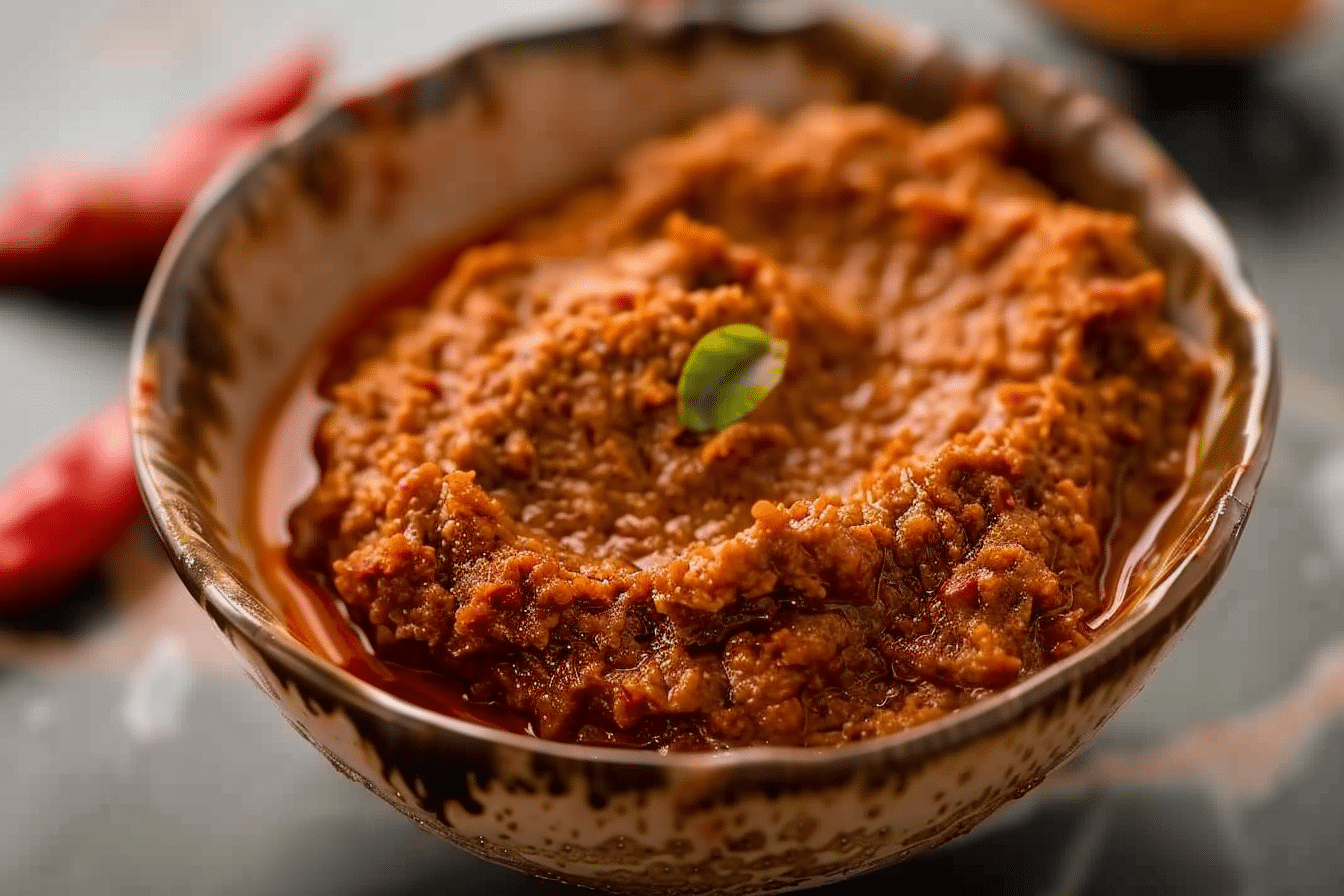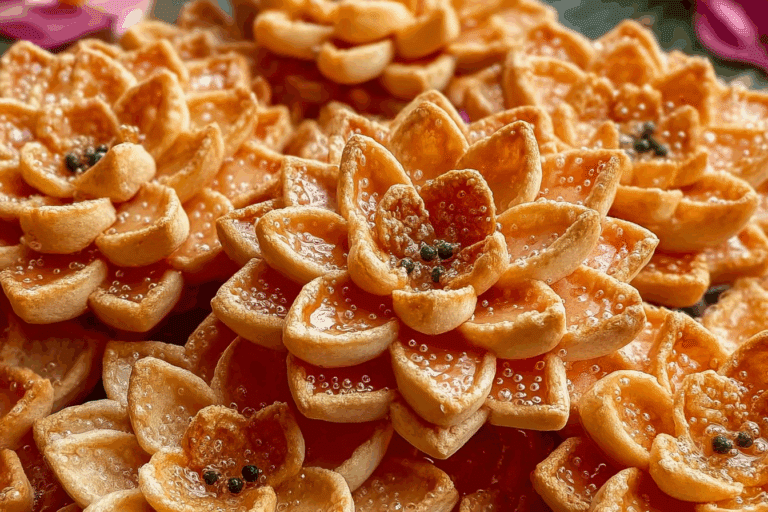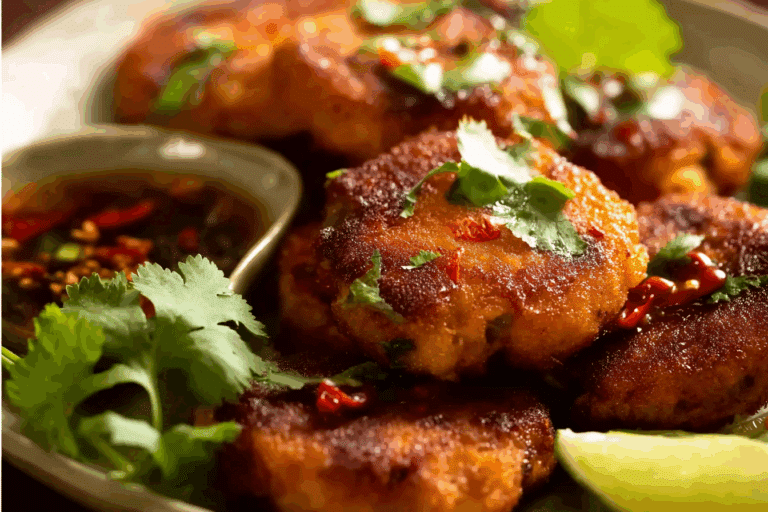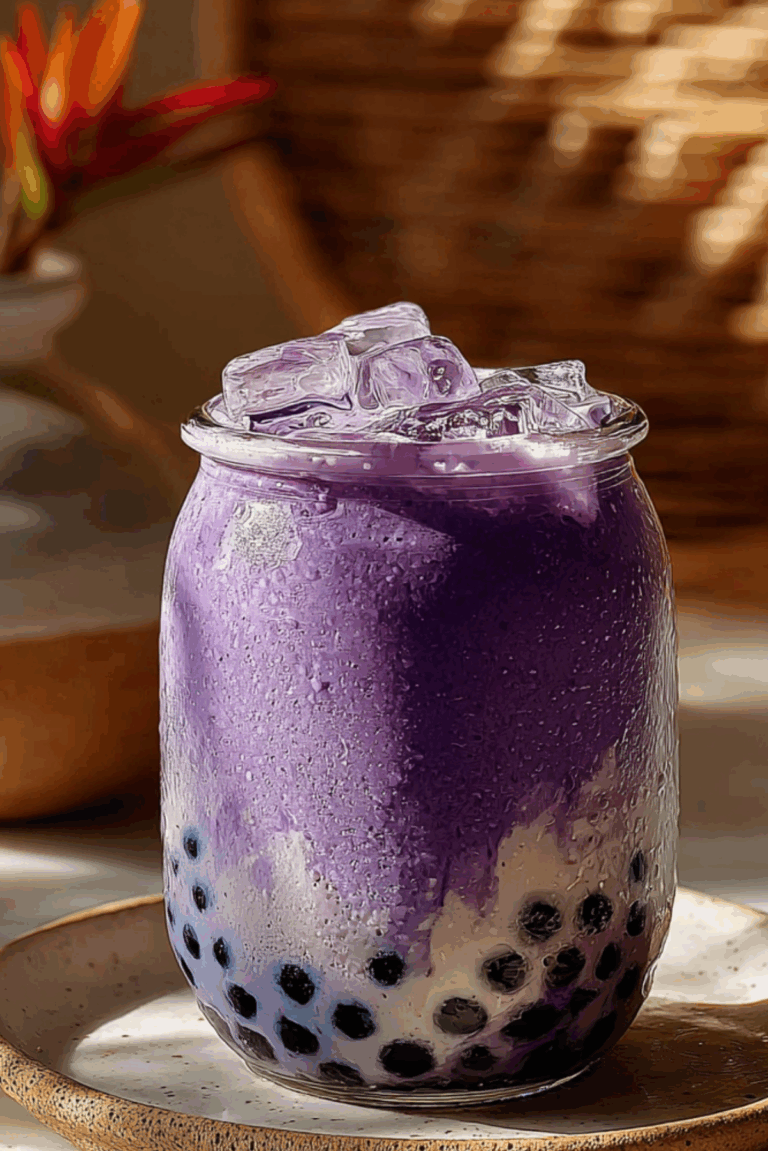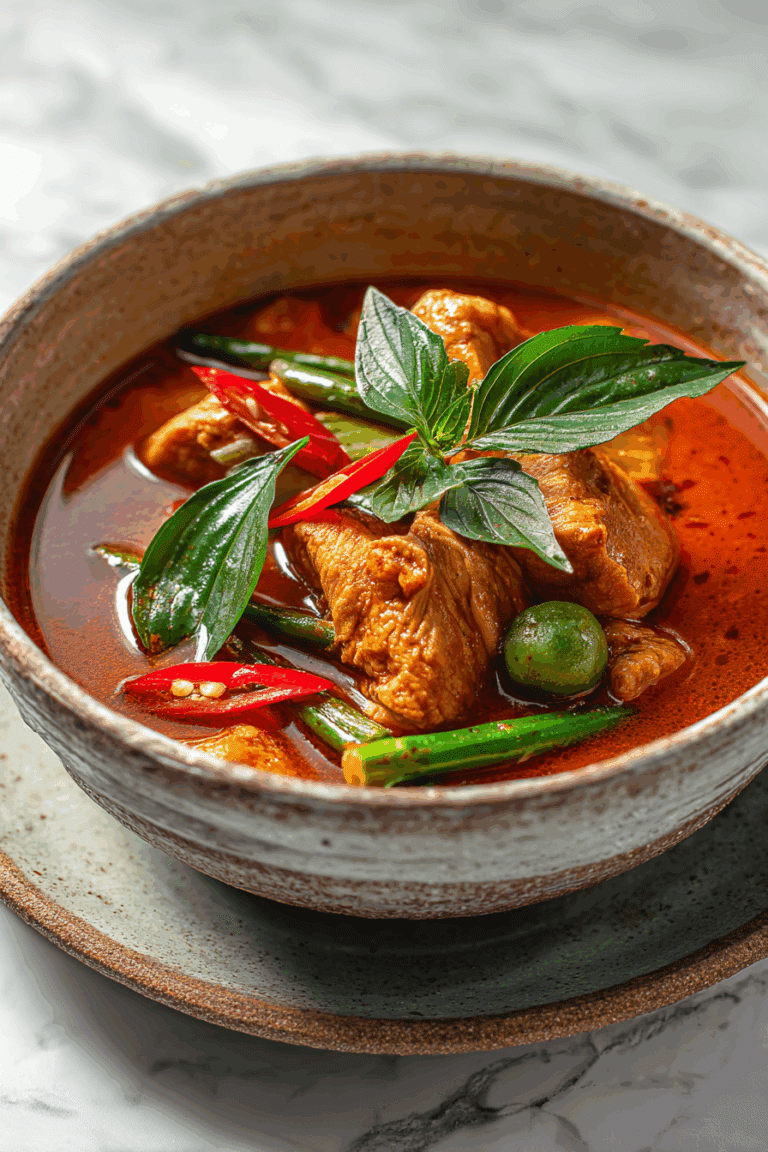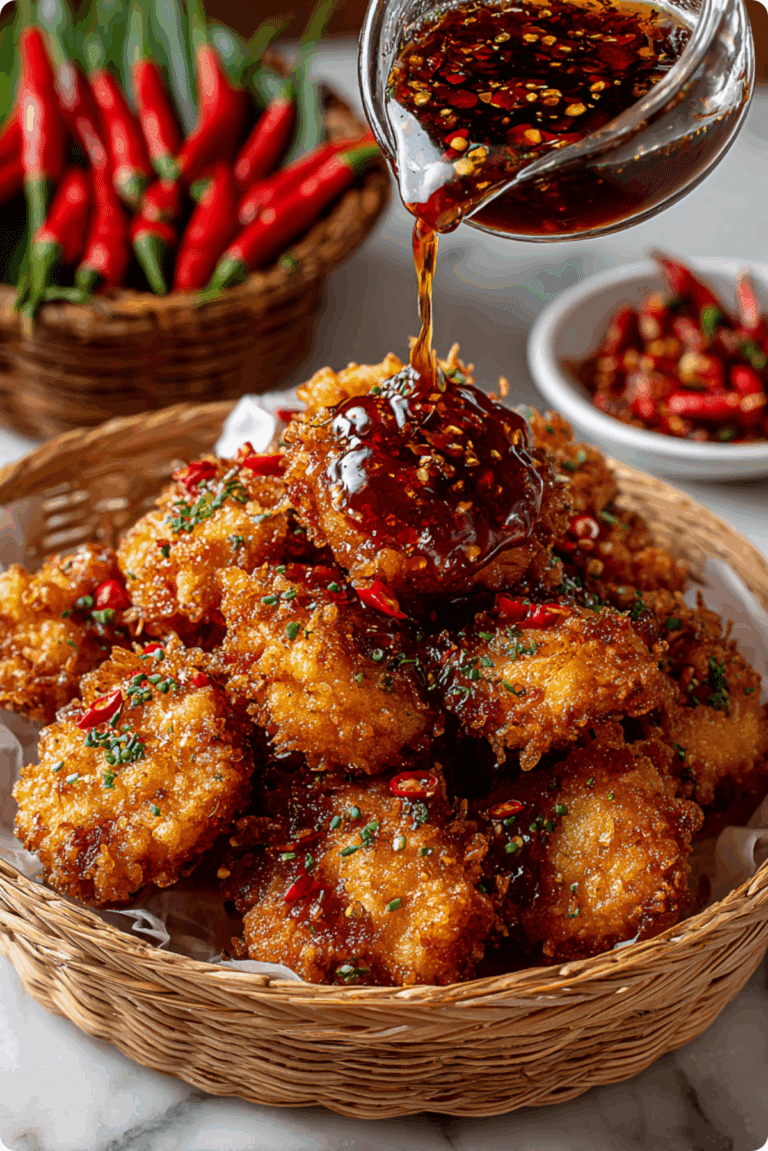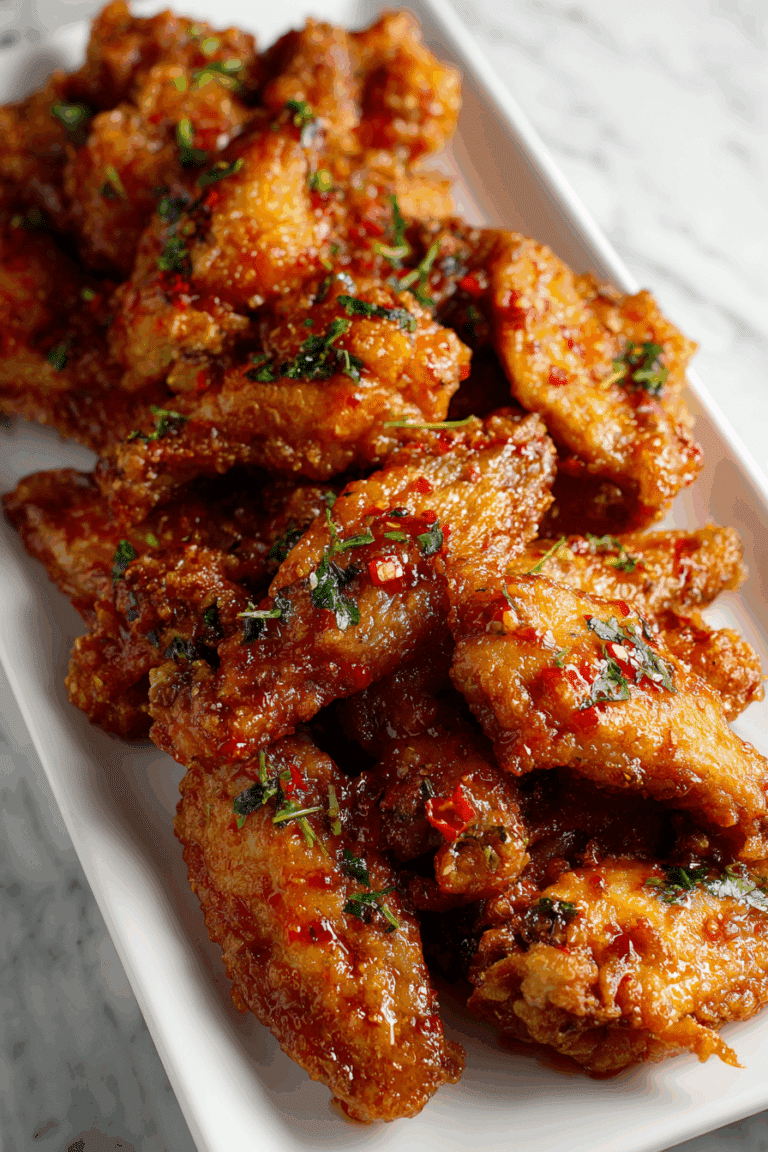Thai Red Curry Paste Recipe You’ll Love Forever
Thai Red Curry Paste is one of those magical ingredients that instantly transforms any dish into a bowl of rich, creamy, and aromatic comfort. Every time I prepare this paste from scratch, the kitchen fills with that irresistible scent of lemongrass, chili, and galangal that feels like being transported right into a bustling Thai street market. It’s more than just a condiment, it’s the heart and soul of Thai cooking.
Before diving into this Thai Red Curry Paste recipe, I want to share a little about how this blog came to life. On the About page of Just Thai Recipes, I tell the story of how my fascination with Thai cuisine began during a trip to Chiang Mai. I was captivated by the way local cooks treated spices like poetry, blending fiery chilies with fragrant herbs to create perfectly balanced flavors. Back home, I spent months recreating those flavors, determined to find that authentic taste I fell in love with. That passion turned into this website, where I now share recipes that celebrate Thai culture and its beautiful food traditions.
This Thai Red Curry Paste recipe represents everything I love about Thai cooking, the balance between heat and fragrance, the artistry of fresh ingredients, and the joy of making something from scratch. In this guide, I’ll show you how to create the best Thai Red Curry Paste right in your own kitchen, with step-by-step instructions, insider tips, and the story behind each ingredient. By the end, you’ll never want to buy store-bought curry paste again.
Making Thai Red Curry Paste from scratch isn’t just about flavor, it’s about connection. You’ll get to touch, smell, and taste every element that gives Thai cuisine its signature depth. From the fiery dried chilies to the earthy galangal and the citrusy pop of lime zest, each part has a purpose. And once you’ve made it, you can use it in countless dishes, from Thai Red Curry Chicken to creamy coconut noodle soups or even marinades for grilled shrimp.
So grab your blender, roll up your sleeves, and let’s make the most delicious Thai Red Curry Paste you’ve ever tasted.
Table of Contents
Table of Contents
Ingredients for Authentic Thai Red Curry Paste
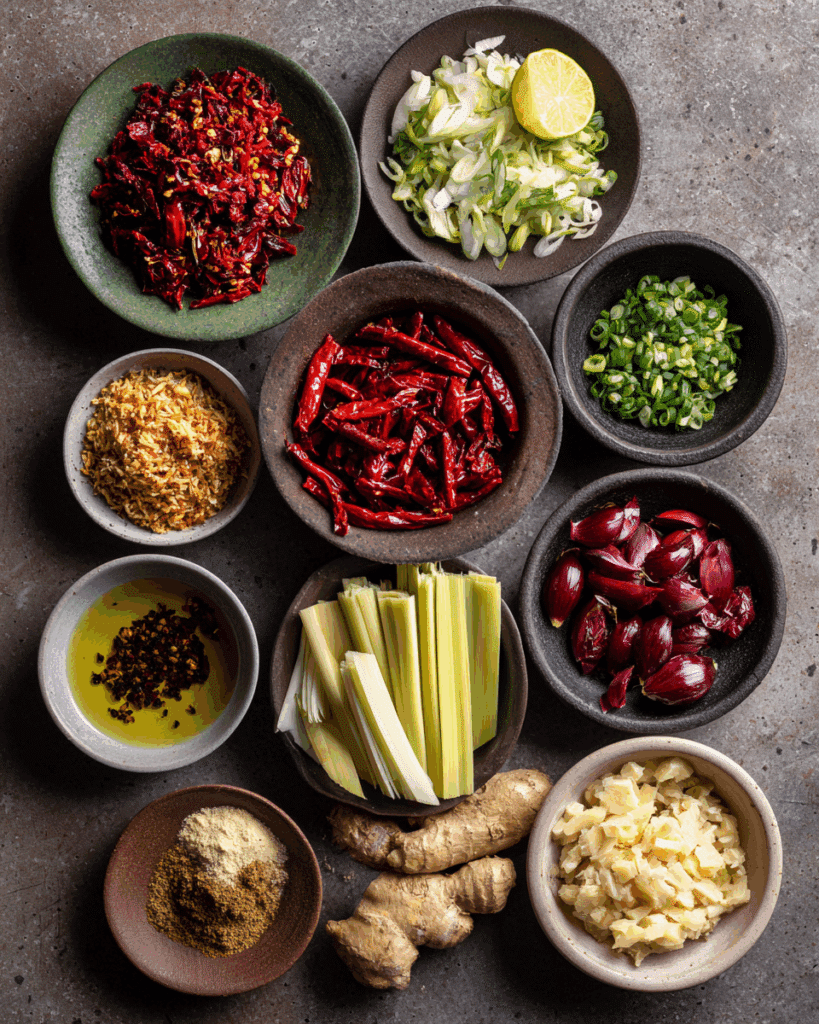
When it comes to Thai Red Curry Paste ingredients, freshness and balance are everything. The recipe below gives you a perfect starting point for building that deep, traditional flavor that defines a real Thai Red Curry Paste. I’ll also include optional swaps in case you can’t find certain ingredients, along with a few internal links that lead to other helpful recipes and ingredient guides on this site.
Here’s what you’ll need:
- 16 dried chilies, chopped into 1 cm pieces, seeds shaken out
- 2 tablespoons lemongrass, sliced, outer skin removed (about 1 large stalk)
- 1 tablespoon grated galangal, peeled and freshly grated
- 4 garlic cloves, peeled
- 1 tablespoon shrimp paste in oil
- ½ teaspoon ground coriander
- ½ teaspoon ground cumin
- 1 tablespoon chopped coriander stems and roots
- 2 red shallots, peeled and roughly chopped
- 1 teaspoon lime zest
- ¼ cup reserved chili soaking water
Each ingredient plays a vital role in shaping the flavor of Thai Red Curry Paste. The dried chilies give the paste its bold color and heat, while lemongrass and galangal bring that unique brightness that keeps the spice from overwhelming your palate. The shrimp paste adds umami depth, and the coriander and cumin ground everything in warmth and aroma. The red shallots and lime zest bring a sweet, tangy edge that ties everything together beautifully.
If you can’t find galangal, you can use ginger, though the taste will be slightly different. Ginger is softer and sweeter, while galangal is more citrusy and sharp. For lemongrass, fresh is always best, but frozen or paste versions work if that’s what’s available. And if you prefer a vegetarian Thai Red Curry Paste, you can skip the shrimp paste and replace it with fermented soybean paste or miso for that savory depth.
The goal is to use ingredients that stay true to the balance of Thai cuisine, which means combining spicy, salty, sour, and sweet flavors in harmony. When you blend everything together, the result should be a smooth, brick-red paste with an aroma that’s both spicy and floral, earthy and fresh.
You can store Thai Red Curry Paste for up to three days in the fridge or freeze it for later use. Once you’ve made your first batch, it becomes a foundation for countless other dishes. Just a spoonful added to soups, stir-fries, or marinades can elevate any meal into something special.
Step-by-Step Instructions for Making Thai Red Curry Paste

Before we get into the detailed process, it’s worth checking out how traditional chefs make Thai Red Curry Paste by hand. If you want a visual reference, you can explore trusted external guides like RecipeTin Eats or Hot Thai Kitchen, which both feature excellent visual breakdowns of the authentic process.
Now, let’s make your Thai Red Curry Paste step by step:
Step 1: Soak the chilies
Start by tasting one of the dried chilies to gauge its spiciness. Thai chilies can vary in heat, so this step ensures you control the final intensity. Place the chopped chilies in a large bowl and pour over about three cups of freshly boiled water. Let them soak for around 30 minutes. The soaking softens the chilies and helps release their color.
Step 2: Prepare the aromatics
While the chilies soak, prep your lemongrass, galangal, garlic, coriander roots, and shallots. Slice and chop them into small pieces so they blend smoothly later. This step is all about building layers of aroma, which is key for a full-bodied Thai Red Curry Paste.
Step 3: Blend it all together
Once the chilies are soft, remove them from the water but keep about a quarter cup of the soaking liquid. Place the chilies in a high-powered blender or food processor. Add all remaining ingredients and pour in the reserved chili water. Blend on high until the mixture becomes completely smooth. This may take 30 seconds in a strong blender or up to a minute in a regular one. If needed, add a little more soaking water to help it blend evenly.
Step 4: Check the texture
The texture should be thick but smooth, not grainy. Test it by rubbing a little between your fingers. If you still feel bits of chili or lemongrass, blend a bit longer. When done, scrape the paste into a bowl or airtight container.
Step 5: Store or use immediately
You can store your Thai Red Curry Paste in the refrigerator for up to three days or freeze it in small portions for future meals. I love freezing it in ice cube trays because each cube is the perfect amount for one curry.
Step 6: Cook with your paste
Use your homemade Thai Red Curry Paste in any dish that calls for it. It’s perfect for Thai Red Curry Chicken, creamy coconut prawn curry, or even stir-fried rice with a hint of spice. Once you start cooking with your own Thai Red Curry Paste, you’ll notice how much fresher and more flavorful your meals become.
By now, your kitchen probably smells amazing. The combination of chilies, lemongrass, and garlic fills the air with warmth and anticipation. Every Thai cook will tell you, this is where the magic begins.
Tips & Tricks for Making the Best Thai Red Curry Paste
Making Thai Red Curry Paste is not just about throwing ingredients into a blender, it’s about technique, balance, and intuition. After preparing this paste countless times, I’ve gathered some of the best tips and tricks to help you make the most aromatic, flavorful, and long-lasting Thai Red Curry Paste at home.
1. Always soak your chilies properly
The first key to a smooth Thai Red Curry Paste is properly soaking your dried chilies. Many people rush this step, but if the chilies are not fully soft, the paste will have a gritty texture. Thirty minutes in hot water usually does the trick, but if your chilies are extra tough, let them sit for up to an hour. The soaking not only softens them but also mellows their sharpness, allowing the chili flavor to blend more harmoniously with other ingredients.
2. Use fresh aromatics whenever possible
Fresh lemongrass, galangal, garlic, and shallots are what give Thai Red Curry Paste its vivid personality. When you use old or dried ingredients, the paste loses its brightness and becomes flat. I often keep lemongrass and galangal frozen, so I always have them ready when inspiration strikes. Just remember to thaw them slightly before blending.
3. Taste as you go
While blending your Thai Red Curry Paste, stop halfway and taste a little. Adjust saltiness by adding a touch more shrimp paste or balance the heat with a few more shallots or lime zest. Remember, you’re building layers of flavor, and each ingredient has a voice in this blend.
4. Blend until silky
If you want that restaurant-quality Thai Red Curry Paste, don’t settle for chunky. Use a strong blender or even a mortar and pestle if you want the traditional method. The smoother the texture, the more evenly it disperses through your curry, giving you a silky, luxurious sauce every time.
5. Storing it right makes all the difference
Thai Red Curry Paste stays freshest when stored properly. Keep it in an airtight glass jar, press plastic wrap directly on the surface before closing the lid to minimize air contact. Store in the fridge for up to three days, or freeze it for up to three months. I recommend freezing it in tablespoon portions, so you can thaw exactly what you need.
6. Don’t skip the shrimp paste
Unless you’re making a vegetarian version, shrimp paste is what gives Thai Red Curry Paste its signature depth. It’s the secret umami booster that ties all the flavors together. It might smell strong on its own, but once it cooks into your curry, it transforms beautifully.
7. Revive frozen paste
If you’ve frozen your Thai Red Curry Paste, let it thaw in the fridge overnight. You can refresh it with a teaspoon of coconut milk or a drizzle of oil before using it in cooking. This brings back the rich texture and flavor that sometimes dulls in freezing.
8. Double your batch
Once you master the recipe, I highly recommend making a double batch of Thai Red Curry Paste. It’s one of those base recipes that makes cooking faster later. You’ll thank yourself when you’re craving a quick curry and already have the hard part done.
Cooking Thai food at home is all about confidence and sensory experience. Making your own Thai Red Curry Paste gives you control, creativity, and that unmistakable homemade freshness that no jar can replicate.
Delicious Variations of Thai Red Curry Paste
One of the most exciting things about Thai Red Curry Paste is how adaptable it is. The base recipe can be adjusted to suit your taste, spice tolerance, or even dietary preferences. I’ve experimented with dozens of variations, and here are some of my favorites that keep the authentic Thai flavor while allowing a personal twist.
1. Mild Thai Red Curry Paste for beginners
If you love flavor but can’t handle too much heat, reduce the number of dried chilies by half or use a milder chili variety like Kashmiri or Guajillo. This still gives that deep red color but with a softer spice level. This version of Thai Red Curry Paste is perfect for families or anyone who enjoys milder food without losing authenticity.
2. Vegetarian Thai Red Curry Paste
For a plant-based version, replace shrimp paste with a tablespoon of fermented soybean paste, miso, or even a touch of soy sauce. You’ll still get that savory umami kick. This vegetarian Thai Red Curry Paste works wonderfully in tofu curries, vegetable stir-fries, or even as a marinade for grilled eggplant.
3. Smoky Thai Red Curry Paste
Add a teaspoon of smoked paprika and char your shallots slightly before blending to get a richer, smokier flavor. This twist brings depth to the traditional Thai Red Curry Paste and works great in grilled chicken or roasted vegetable curries.
4. Sweet and tangy Thai Red Curry Paste
If you like a touch of sweetness, blend in a teaspoon of palm sugar or brown sugar, and increase the lime zest for brightness. This version of Thai Red Curry Paste balances beautifully with coconut milk and is amazing for seafood curries.
5. Nutty Thai Red Curry Paste
Some chefs love to add a handful of roasted peanuts or cashews for creaminess and richness. This nutty Thai Red Curry Paste pairs wonderfully with coconut-based curries and even makes a tasty spread when mixed with yogurt.
6. Real Thai Red Curry Paste inspired by street food
If you’ve ever tasted curry in Thailand, you’ll notice the paste often has a more complex, slightly fermented flavor. To mimic that, add a teaspoon of fish sauce and let your Thai Red Curry Paste sit in the fridge for a day before using it. The rest time allows the flavors to marry and deepen, resulting in that truly authentic profile that defines real Thai Red Curry Paste.
7. Best Thai Red Curry Paste for quick meals
Sometimes you just want to make dinner fast. Mix a tablespoon of your homemade paste with canned coconut milk, a splash of lime juice, and some pre-cooked chicken or shrimp. In 15 minutes, you’ll have a meal that tastes like it came straight out of a Thai kitchen.
Whether you’re following a traditional recipe or experimenting with your own, remember that Thai Red Curry Paste is meant to reflect your personal taste. Once you get comfortable adjusting spice levels and balancing flavors, you’ll start creating your own signature version that fits your style perfectly.
Nutrition and Health Benefits of Thai Red Curry Paste
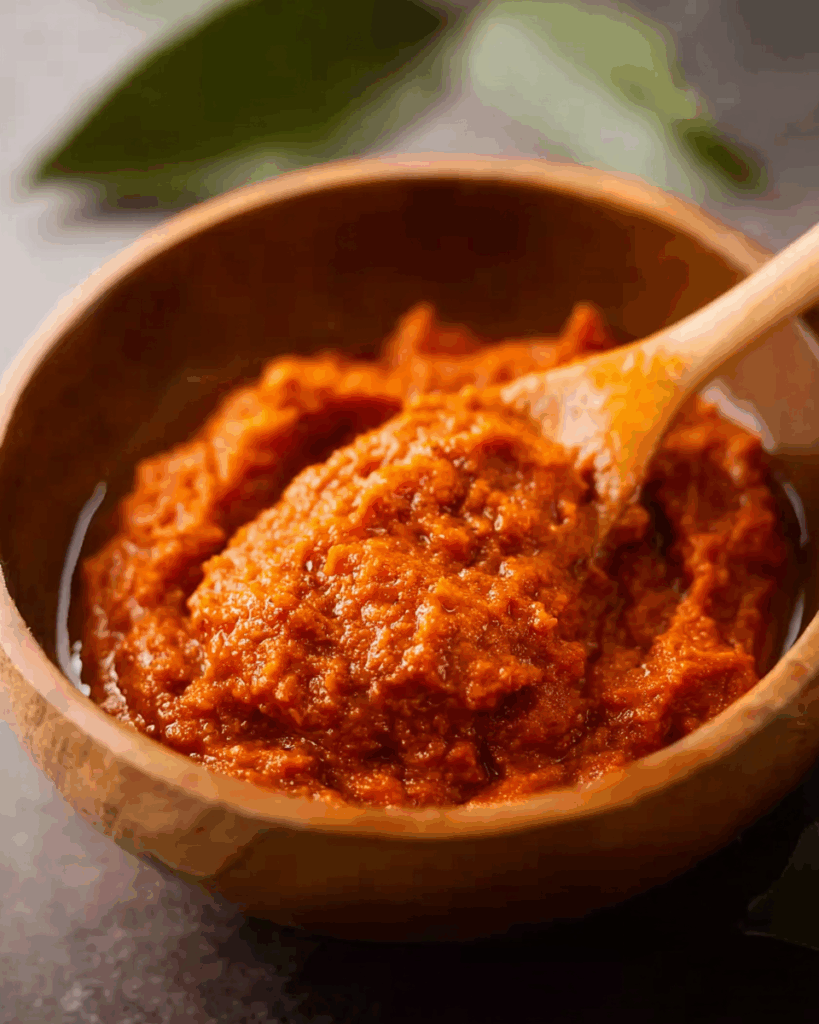
It’s easy to think of Thai Red Curry Paste simply as a flavor bomb, but it’s also surprisingly nutritious. The natural ingredients that go into Thai Red Curry Paste bring a host of health benefits that make your meals as nourishing as they are delicious.
1. Rich in antioxidants
Those vibrant red chilies that give Thai Red Curry Paste its fiery color are packed with capsaicin, an antioxidant known for boosting metabolism and reducing inflammation. Capsaicin can also help improve blood circulation and support heart health when enjoyed in moderation.
2. Supports digestion
The lemongrass and galangal in Thai Red Curry Paste are both known for aiding digestion. Lemongrass helps reduce bloating and supports healthy digestion, while galangal contains compounds that can soothe the stomach and promote gut health.
3. Boosts immunity
Garlic and shallots are powerful immune-boosting ingredients. They’re rich in allicin, which has antibacterial and antiviral properties. Combined with chili’s natural heat, Thai Red Curry Paste becomes a warming blend that helps strengthen your body’s defenses.
4. Low in calories, big in flavor
One tablespoon of Thai Red Curry Paste adds intense flavor to dishes without adding significant calories. Unlike heavy sauces, it provides richness through spices, not fats, making it perfect for lighter, flavorful meals.
5. Balances the body with natural herbs
Traditional Thai cooking views herbs as medicine. The combination of lemongrass, galangal, and lime zest in Thai Red Curry Paste brings balance to the body, refreshing the senses while promoting overall well-being.
6. Helps reduce sodium intake
Store-bought curry pastes often contain high amounts of salt and preservatives. When you make Thai Red Curry Paste at home, you control the ingredients. You can reduce sodium by using less shrimp paste or no added salt, and still keep the flavor perfectly balanced.
7. Healthy fats in moderation
If you cook your Thai Red Curry Paste with coconut milk, you’ll benefit from medium-chain triglycerides (MCTs), a type of healthy fat that provides energy and supports brain function.
The best part about Thai Red Curry Paste is that it’s naturally gluten-free, dairy-free, and full of wholesome, fresh ingredients. It fits beautifully into many diets, from paleo to vegan, and brings a bright, spicy flavor that makes healthy eating exciting again.
When you think about it, Thai Red Curry Paste isn’t just a base for curries, it’s a jar full of powerful nutrients and healing properties, wrapped up in one of the most delicious flavor combinations on earth.
Make-Ahead, Storage & Freezing Tips
One of the greatest joys of homemade curry paste is how convenient it becomes once prepared. Spending a little time in the kitchen today means saving a lot of effort later. You can easily make a big batch, store it properly, and have fresh, fragrant flavor ready to transform your dishes anytime.
Make-Ahead Preparation
The paste can be prepared several days before you plan to use it. In fact, letting it rest overnight in the refrigerator often deepens the flavor. The ingredients continue to mingle, creating a richer, more complex taste. After blending, transfer the mixture to a clean glass jar or airtight container. Press a small piece of plastic wrap directly onto the surface to reduce air contact, then close it tightly. Refrigerate for up to three days for the best results.
If you’re cooking for a special occasion, prepare it one or two days in advance. That way, on the day of your meal, you’ll only need to focus on the main dish. Whether you’re making chicken curry, seafood soup, or a vegetable stir-fry, this step saves time while keeping all that homemade freshness intact.
Freezing for Long-Term Storage
This paste freezes beautifully, maintaining both its flavor and aroma. I recommend dividing it into small portions before freezing. A silicone ice cube tray works perfectly, each cube roughly equal to one tablespoon. Once frozen solid, pop the cubes into a zip-top freezer bag, label it with the date, and store for up to three months.
When you’re ready to use it, remove the amount you need and let it thaw in the fridge overnight, or drop the frozen cubes straight into a hot pan with oil or coconut milk. They’ll melt quickly, releasing that familiar aroma that fills your kitchen with warmth and spice. To refresh the texture, stir in a small splash of coconut milk or a drizzle of oil after thawing.
Shelf Life and Storage Tips
Keep in mind that freshness matters. Over time, natural oils in the paste can rise to the top. If that happens, just stir it gently before using. Always use a clean spoon when scooping from the jar to avoid introducing moisture or bacteria. When stored correctly, refrigerated paste keeps its vibrant color and punchy flavor for days, while frozen portions stay potent for months.
Common Mistakes to Avoid
Even experienced cooks sometimes make a few missteps when preparing or using curry paste. Here are the most common mistakes I’ve seen over the years, along with simple ways to fix or avoid them altogether.
1. Using the wrong type of chili
Not all dried chilies are the same. Some are extremely spicy while others are mild and aromatic. If you use overly hot varieties without tasting them first, your paste might end up overpowering. Always test one chili before soaking to gauge the heat level. It’s easier to add spice later than to fix an overly fiery batch.
2. Skipping the soaking step
Dried chilies must be softened before blending. If you skip this or shorten the soak, your final texture will be coarse and uneven. Hot water is key because it loosens the chili skins and helps extract that deep red pigment, which gives the paste its signature color.
3. Not blending long enough
A quick blend might seem sufficient, but a truly smooth texture takes time. Keep blending until the mixture feels silky between your fingers. If it still feels gritty, continue blending or add a tablespoon of the chili soaking water to help things along.
4. Ignoring ingredient freshness
Lemongrass, galangal, and shallots lose their intensity as they age. Old ingredients can make the flavor dull. Whenever possible, buy fresh herbs and store them properly. If you can’t find galangal, fresh ginger is a decent backup, though it will give a softer, slightly sweeter note.
5. Using too much oil or liquid during blending
Adding too much water or oil makes the paste runny, which affects both taste and texture. Start with a small amount and increase gradually until the blender runs smoothly. You’re aiming for a thick, cohesive paste that’s easy to scoop but not watery.
6. Overcooking during use
When you cook with curry paste, always sauté it gently. High heat burns the aromatics quickly, resulting in a bitter flavor. Medium heat allows the oils to release slowly, deepening the aroma and ensuring a balanced flavor throughout your dish.
7. Improper storage
Exposure to air and moisture shortens shelf life. Always cool the paste completely before refrigerating or freezing it. Store in glass, not metal, to prevent flavor transfer. Labeling containers with dates helps you keep track of freshness.
By paying attention to these details, you’ll keep your paste rich, smooth, and bursting with authentic flavor every single time.
Cultural and Historical Background
To truly appreciate this paste, it helps to understand its deep roots in Thai culinary history. It isn’t just a blend of spices, it’s a cornerstone of a cooking tradition that has evolved over centuries.
In traditional Thai cooking, curry pastes were often prepared fresh each morning. Families would gather in open kitchens, pounding ingredients by hand with heavy granite mortars and pestles. This wasn’t just cooking, it was a ritual. The rhythmic sound of pounding chilies, garlic, and herbs filled the air, a signal that a meal was being lovingly prepared. Every household had its own version, passed down through generations, slightly different depending on regional ingredients or family preference.
The paste we know today has its origins in central Thailand, where it was crafted to balance spicy, salty, sour, and sweet flavors the four essential elements of Thai cuisine. Early versions used locally available herbs like lemongrass and kaffir lime peel, while coastal regions added shrimp paste for depth and richness.
Interestingly, curry pastes weren’t originally cooked with coconut milk. That technique came later through cultural exchange with traders and neighboring regions. Over time, coconut milk became a defining component in Thai curries, adding creaminess that complements the heat and aroma of the paste perfectly.
In Thai households, making curry paste from scratch is still a point of pride. It’s considered an act of care and dedication, a way to bring family together through food. Even as store-bought versions have become widely available, many home cooks and chefs continue to make their own, insisting that freshness can’t be replicated in a jar.
Beyond Thailand, this vibrant paste has traveled far. It’s now a global favorite, found in restaurants from Los Angeles to London. But in every kitchen where it’s made by hand, it carries a little piece of Thai culture with it a connection to tradition, craftsmanship, and the belief that great food begins with great ingredients.
Cooking with it isn’t just about creating flavor, it’s about honoring a culinary heritage that values balance, patience, and authenticity. Whether you prepare it in a modern blender or the old-fashioned way with a mortar and pestle, each spoonful tells the story of centuries of Thai cooking wisdom, kept alive through every meal.
Serving Suggestions

A good curry paste can do so much more than you might imagine. Once you’ve made it, you’ll find endless ways to use it in everyday cooking. It’s not just for curries; it can be the base of soups, marinades, stir-fries, and even sauces that transform simple ingredients into something extraordinary.
Classic Thai Red Curry
The most common use, of course, is to create a beautiful coconut curry. Start by heating a tablespoon of your paste in a skillet with a splash of oil. Sauté until it becomes fragrant, which usually takes about two minutes. Then, stir in coconut milk and simmer. Add chicken, shrimp, or tofu, along with your favorite vegetables like bell peppers, bamboo shoots, or snow peas. The result is a creamy, spicy, and perfectly balanced dish that feels like comfort in a bowl.
Marinades for Grilling
Mix two tablespoons of the paste with coconut milk, a little lime juice, and soy sauce. Use it to marinate chicken thighs, shrimp, or tofu. Let the flavors soak in for at least an hour before grilling. The result is smoky, charred, and wonderfully aromatic, with layers of flavor that go beyond typical barbecue seasoning.
Soups and Broths
A spoonful added to broth instantly elevates it. Try it with coconut milk, noodles, mushrooms, and herbs for a Thai-inspired soup that’s comforting and full of depth. You can also blend it with vegetable or chicken stock for a spicy noodle soup that comes together in minutes.
Vegetarian Meals
For plant-based eaters, it’s the perfect way to add excitement to vegetables. Toss roasted cauliflower or sweet potatoes with a bit of paste and olive oil before baking. You’ll get a roasted dish that’s both bold and naturally sweet.
Fusion Ideas
You can even use it to experiment with non-traditional dishes. Mix a small amount into mayonnaise or yogurt for a spicy dip, or blend it into a vinaigrette for an exotic salad dressing. A hint of the paste mixed into scrambled eggs or pasta sauce gives everyday meals a surprising twist.
Pair your finished dishes with jasmine rice, sticky rice, or flatbreads to balance the spice and richness. For drinks, a crisp white wine or a cold Thai iced tea complements the heat beautifully.
When exploring this recipe online, many people look for related versions and ideas. Here are some popular variations and connections that you might also enjoy. These are all different expressions of the same delicious theme, offering new inspiration each time you cook.
Thai red curry paste recipe
This phrase usually refers to the traditional preparation found in most Thai households. It focuses on balance, freshness, and simplicity. Home cooks searching for this are often looking for ways to bring authentic Thai flavor into their own kitchens, using ingredients that are easy to find and blend together.
Thai red curry paste ingredients
Knowing what goes into this paste is the foundation of mastering Thai cooking. Each ingredient contributes to a specific sensory experience, from the heat of chilies to the citrus notes of lemongrass and the earthy touch of galangal. Understanding these elements helps you appreciate the harmony that defines the recipe.
Real Thai red curry paste
People searching for this version often want authenticity. They want the deep, rich flavor you can’t get from store-bought jars. Making it by hand, tasting, adjusting, and balancing the flavors—these are what make it real.
Best Thai red curry paste
This query usually leads cooks to experiment with different brands or homemade recipes until they find their favorite balance of heat, saltiness, and aroma. The “best” version isn’t one-size-fits-all; it’s the one that speaks to your personal taste.
Thai red curry paste recipe Jamie Oliver
Celebrity chefs have their own takes on this classic blend, often adjusting spice levels or simplifying the ingredient list. Jamie Oliver’s version tends to emphasize accessibility for home cooks, using ingredients available in most grocery stores while still keeping that vibrant Thai character.
Thai red curry paste Blue Dragon, Lidl, Tesco
These searches often come from shoppers comparing store-bought options. Each brand has its strengths, but they can’t quite match the freshness and depth of a homemade version. Still, for busy weeknights, they’re convenient backups and a good introduction to Thai flavors for beginners.
When people look up these terms, they’re not just searching for instructions they’re searching for experience. They want to recreate that unforgettable taste that connects food, culture, and comfort.
Conclusion
Cooking from scratch might seem intimidating at first, but once you’ve made this paste yourself, you’ll never want to go back to jarred versions. The process itself feels grounding and creative, turning simple ingredients into something that captures the essence of Thai cooking.
The beauty of this recipe lies in its flexibility. You can make it spicy, mild, smoky, or tangy depending on your mood and what you’re cooking. Once you have a jar in the fridge, you have the power to turn ordinary meals into extraordinary ones.
Every time I make it, I’m reminded of the small street markets in Thailand, where the air hums with sizzling woks and the fragrance of herbs. That same energy can fill your kitchen when you prepare it yourself. It’s not just about making food; it’s about creating a connection between flavors, between people, and between traditions that have stood the test of time.
So go ahead, give it a try, and let the aroma fill your home. Cook it for friends, share it with family, and see how a simple homemade paste can make every meal feel a little more special.
FAQ
Why does my curry taste bitter or harsh?
That usually means the paste was cooked at too high a temperature. Always sauté gently over medium heat until fragrant, not burned. This allows the aromatics to bloom without turning bitter.
What if I don’t have galangal?
Fresh ginger makes a good substitute. It’s a little milder and sweeter but still provides that fresh, aromatic quality that balances the spice. Use the same amount and adjust to taste.
Can I make this paste without shrimp paste?
Absolutely. If you prefer a vegetarian or vegan version, replace shrimp paste with fermented soybean paste, miso, or soy sauce. You’ll still get that savory, umami depth without seafood.
How long does homemade curry paste last in the fridge?
It usually keeps well for about three days if stored properly in an airtight glass jar. Press a small piece of plastic wrap over the surface before sealing to prevent air from getting in. For longer storage, freezing is best.
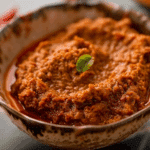
Thai Red Curry Paste
- Prep Time: 40 minutes
- Cook Time: 5 minutes
- Total Time: 45 minutes
- Yield: About 1 cup 1x
- Category: Condiment
- Method: Blending
- Cuisine: Thai
- Diet: Gluten Free
Description
A fragrant and authentic homemade Thai red curry paste made with dried chilies, lemongrass, galangal, garlic, and shrimp paste. Perfect for creating traditional Thai curries, soups, and marinades bursting with fresh, spicy flavor.
Ingredients
- 16 dried chilies, chopped into 1 cm (0.5″) pieces, seeds shaken out
- 2 tbsp lemongrass, sliced, reedy outer skin removed (1 large stalk)
- 1 tbsp grated galangal, peeled and grated
- 4 garlic cloves, peeled whole
- 1 tbsp shrimp paste in oil
- 1/2 tsp ground coriander
- 1/2 tsp ground cumin
- 1 tbsp chopped coriander/cilantro stem and roots
- 2 red shallots, peeled and roughly chopped
- 1 tsp lime zest
- 1/4 cup reserved chili soaking water
Instructions
- Taste dried chilies for spiciness. Place the chopped chilies in a large bowl and pour over about 3 cups of freshly boiled water. Leave to soak for about 30 minutes.
- Remove chilies and reserve the soaking water.
- Place the softened chilies in a blender or food processor.
- Add the remaining ingredients along with 1/4 cup of the chili soaking water.
- Blend on high until completely smooth, about 20 seconds in a powerful blender or up to 1 minute in a regular one. Add a little more soaking water if needed to help blending.
- Scrape the paste into a clean bowl or airtight container.
- Store in the refrigerator for up to 3 days or freeze for later use.
- Use as a base for Thai curries, soups, or marinades.
Notes
- Soaking the chilies softens them and enhances color and texture.
- Fresh lemongrass and galangal give the best flavor; substitute ginger if galangal is unavailable.
- Shrimp paste provides depth and umami; for a vegetarian version, replace it with miso or fermented soybean paste.
- Adjust chili quantity to control spiciness.
- Freeze portions in ice cube trays for easy use later.
Nutrition
- Serving Size: 1 tablespoon
- Calories: 25
- Sugar: 0.5g
- Sodium: 130mg
- Fat: 1g
- Saturated Fat: 0.3g
- Unsaturated Fat: 0.6g
- Trans Fat: 0g
- Carbohydrates: 3g
- Fiber: 0.5g
- Protein: 1g
- Cholesterol: 2mg
Keywords: Thai red curry paste, curry paste, Thai cooking, homemade curry base, chili paste, Thai recipe, authentic Thai curry, spicy paste, lemongrass curry, galangal curry paste

